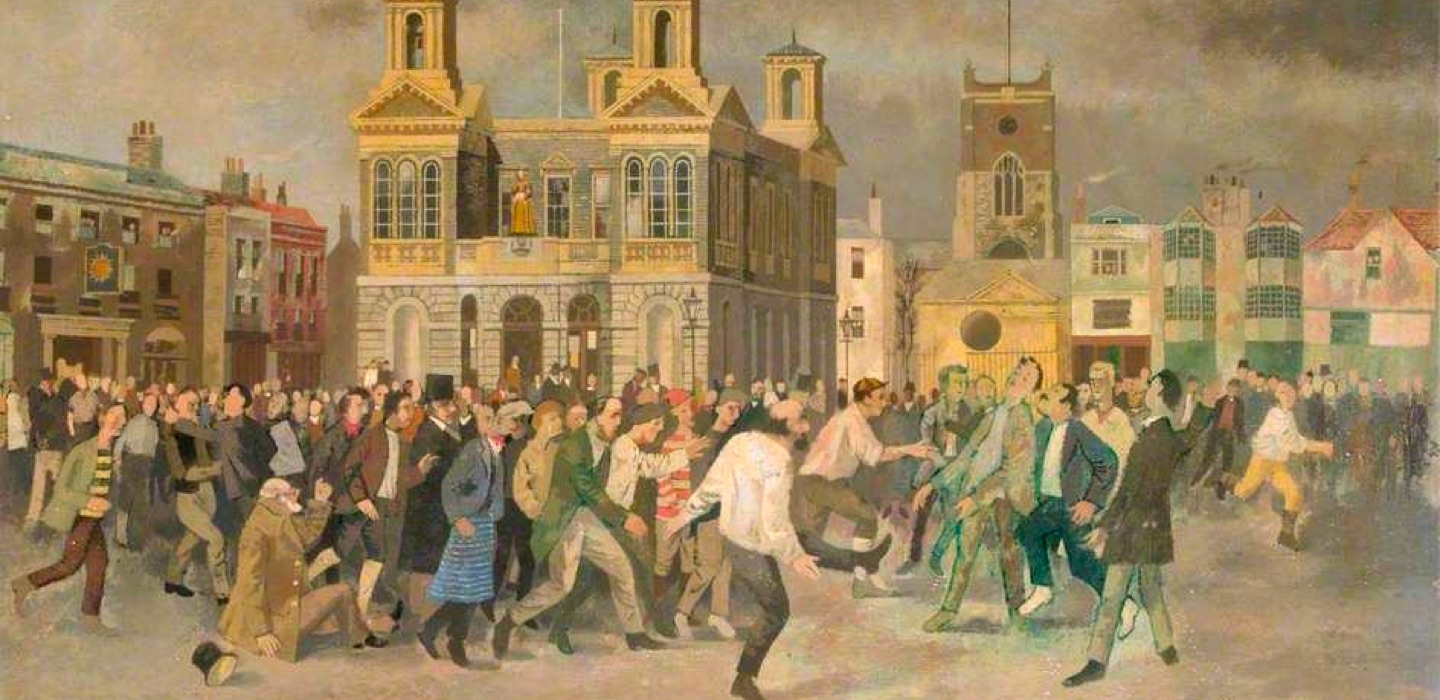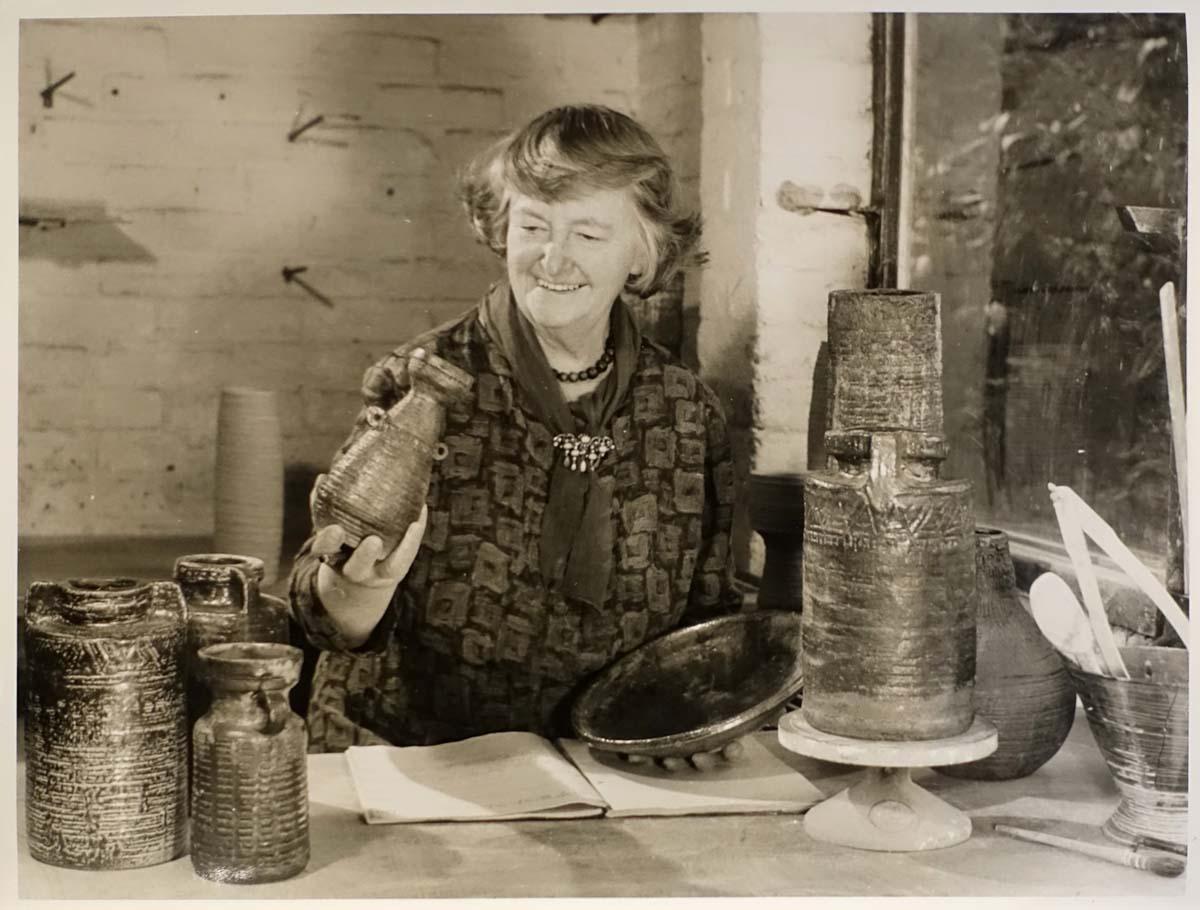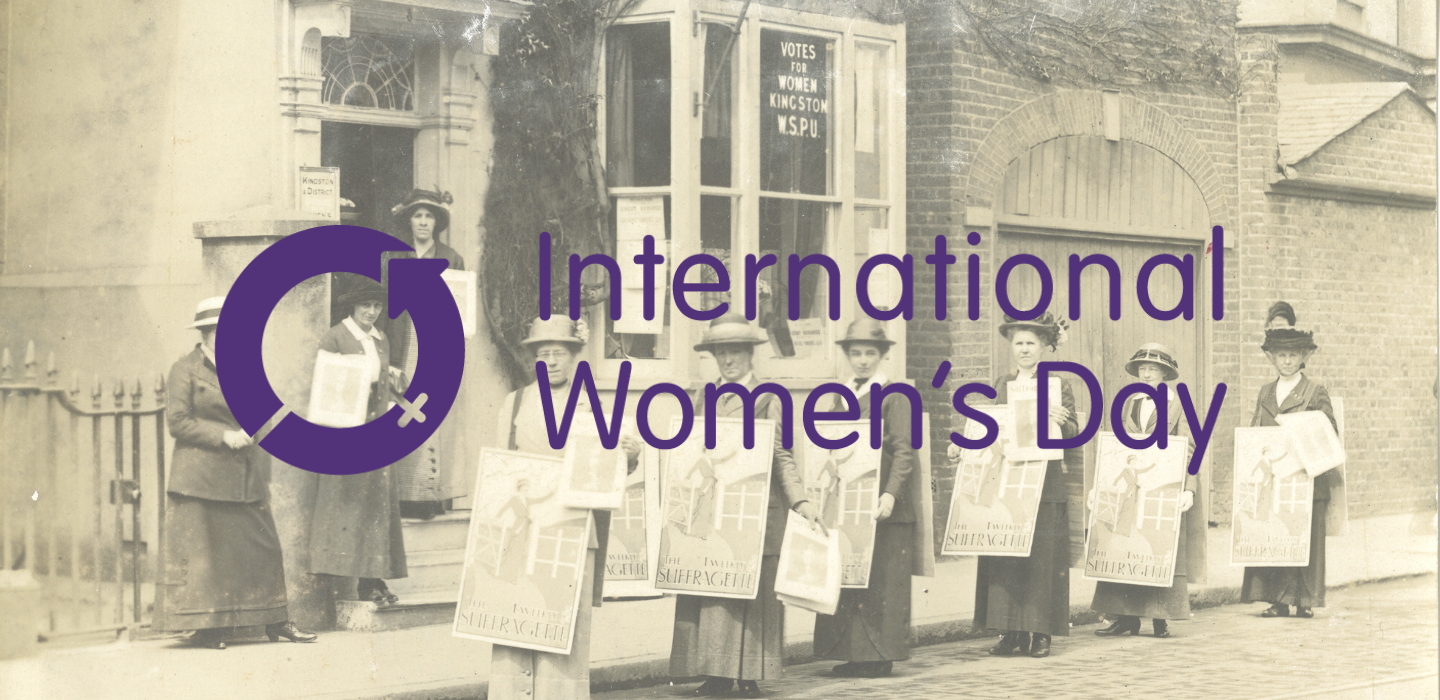
The below artworks show snippets of time in Kingston Upon Thames as portrayed by women over the past 100 years. These artworks are just some of the art collection managed by Kingston Heritage Service.
Click on the photos to see the artworks in more detail.
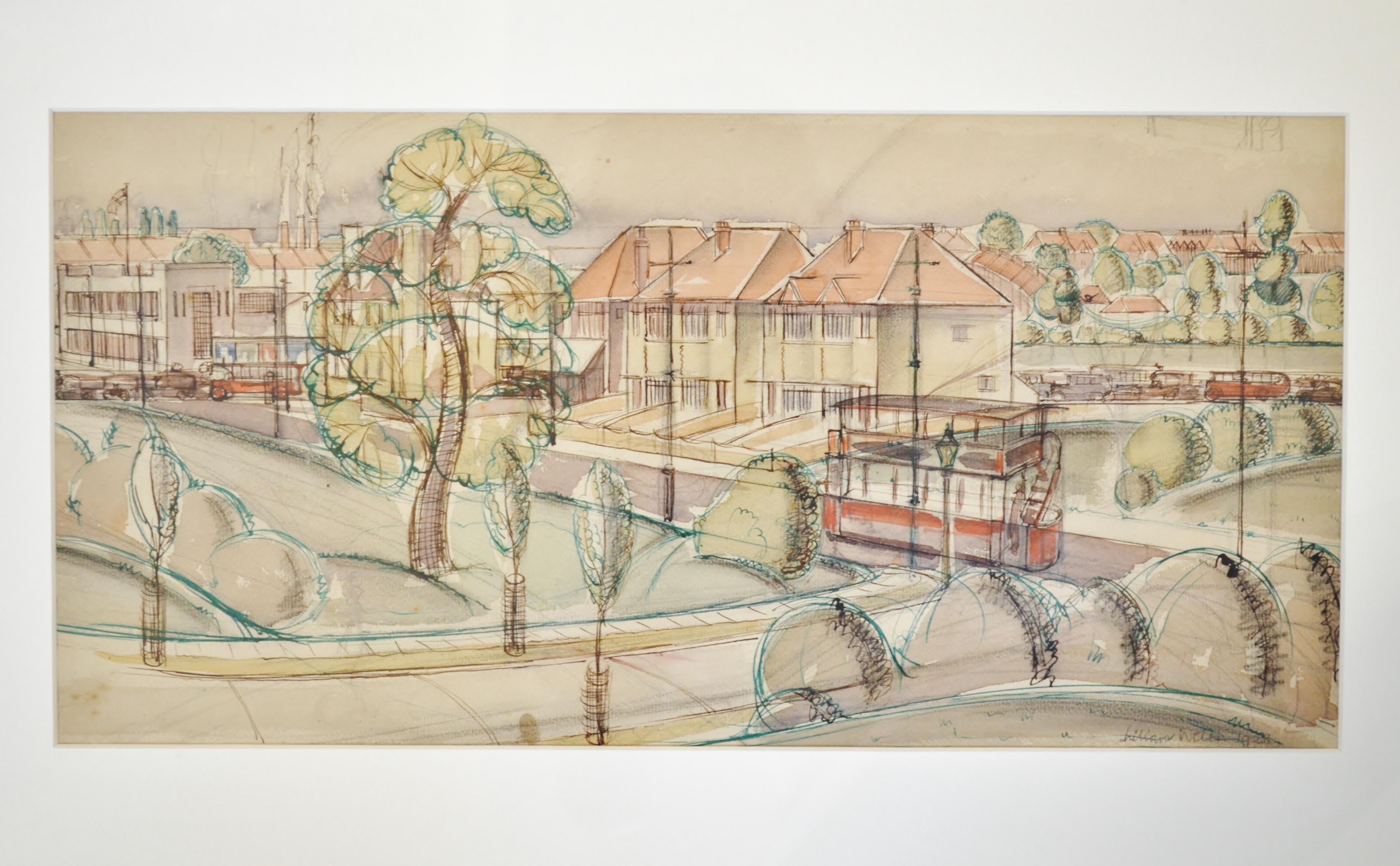
© the copyright holder. Photo credit: Royal Borough of Kingston upon Thames
Lilian Welsh
Kingston By-pass, 1928
Pen, ink and watercolour
-
Kingston By-pass was built in 1927 to prevent traffic from clogging up the town centre. This main road also encouraged the building of miles of streets of suburban houses on former farmland. The character of Tolworth in particular changed from that of rural village to small town.
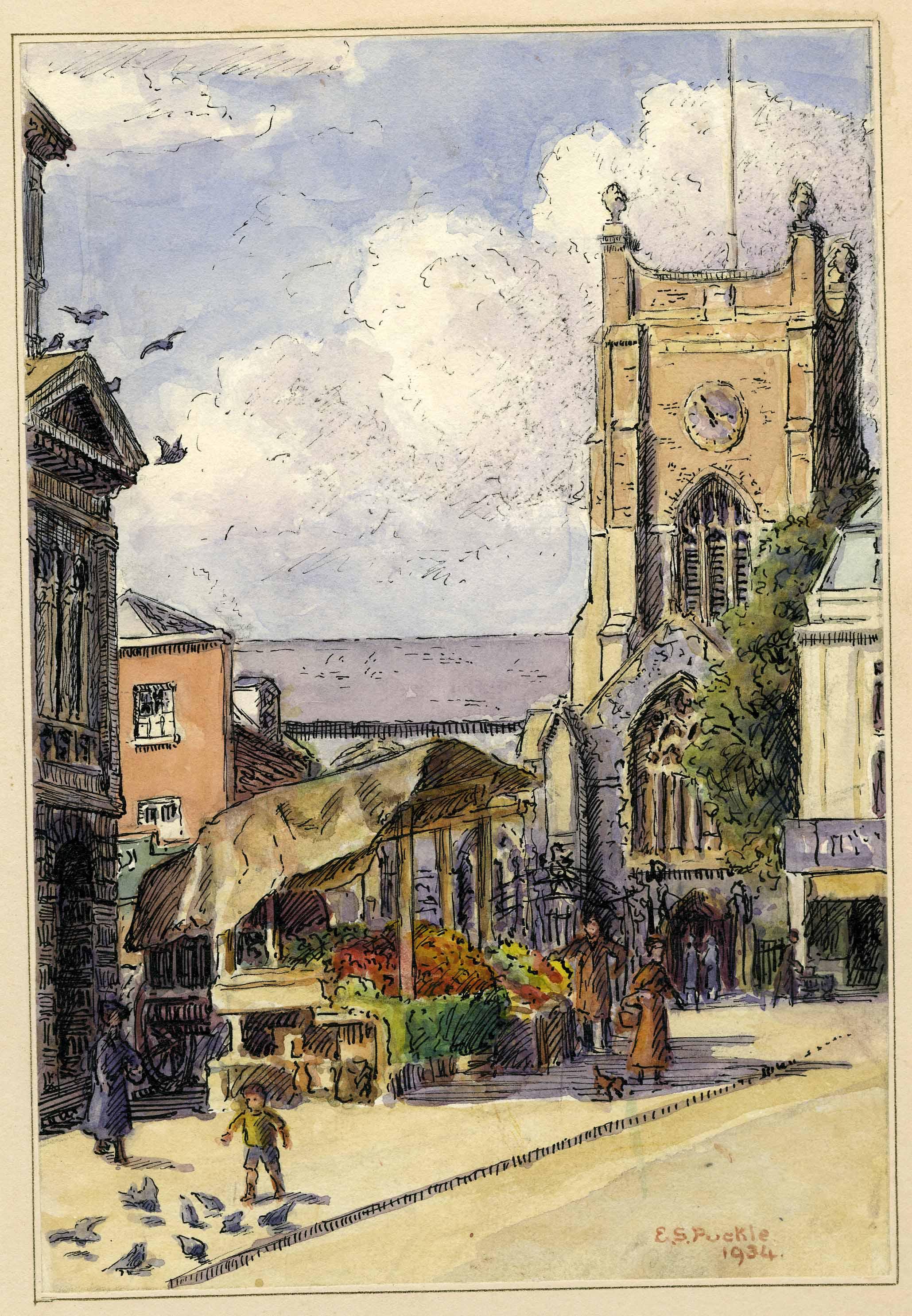
© the copyright holder. Photo credit: Royal Borough of Kingston upon Thames
Effie S. Puckle
Church and Market Place, Kingston, 1934
Pen, ink and watercolour
-
This image shows a stall behind the Market House, overlooked by All Saints’ Church. A general produce market took place daily here from 1919. The cattle market had moved from the Market Place to the Fairfield in 1925.
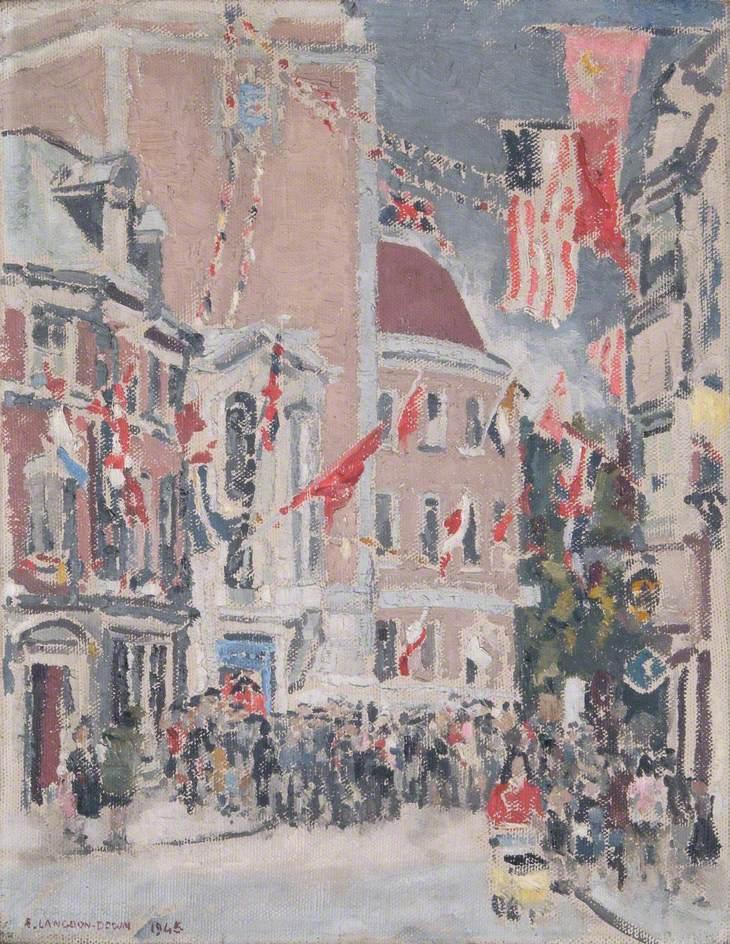
© the copyright holder. Photo credit: Royal Borough of Kingston upon Thames
Elspie Langdon Down
VE Day, Kingston, Surrey, 1945
Oil on canvas
-
On 8 May 1945, flags and bunting decorated the streets. All Saints’ Church bells rang out and crowds gathered outside the Guildhall to listen to the East Surrey Regiment band. Kingstonians cheered Churchill’s victory speech as it was broadcast, then danced in celebration. Street parties were held throughout the borough.
Elspie Langdon-Down (1898–1987) was the granddaughter of Dr. John Langdon Down. In 1868 he established Normansfield in Teddington, an institution which offered residential and educational facilities for people with learning disabilities. Elspie taught arts and crafts to some of the girls at Normansfield, including weaving.
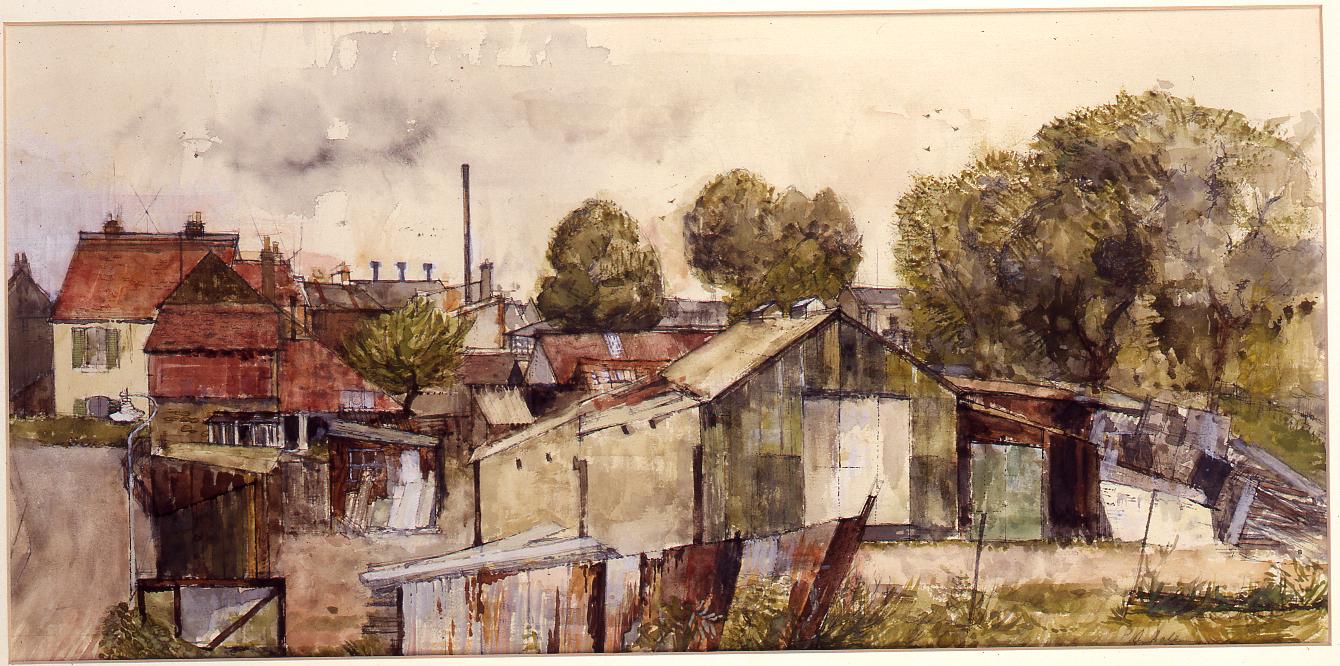
© the copyright holder. Photo credit: Royal Borough of Kingston upon Thames
Penny Dale
Land to the rear of KSA showing the last dairy farm in Kingston, 1958
Watercolour and bodycolour (Brill Collection)
-
Emma Offer established Offer’s Dairy Farm in 1861, when she became a widow with six children. The Knight’s Park area became increasingly built up and in the 1930s the fields were acquired for building Kingston School of Art. The farm closed after World War II.
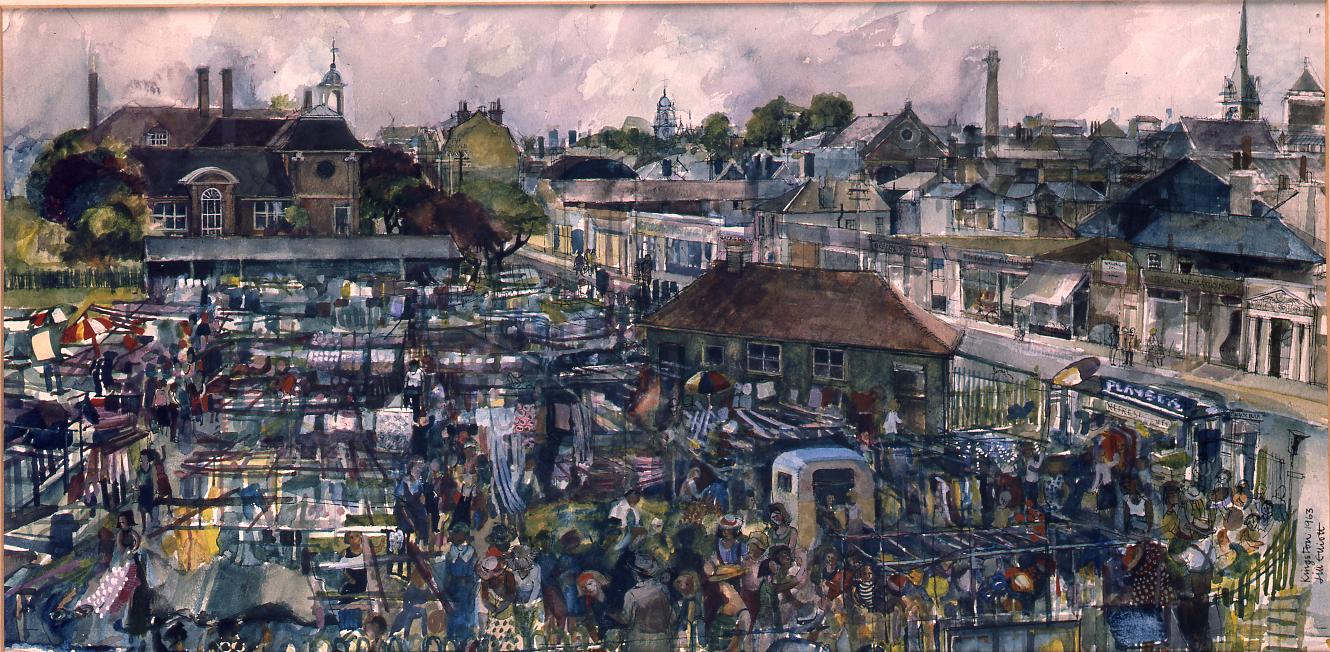
© the copyright holder. Photo credit: Royal Borough of Kingston upon Thames
Jill Elliot
Monday Market, Fairfield car park, 1963
Pen, ink and watercolour with bodycolour (Brill Collection)
-
Kingston’s first public library was established in temporary accommodation in 1882. The Council raised a loan to finance a permanent building for the library on the Fairfield in 1903. However, Scottish American philanthropist Andrew Carnegie offered to pay the entire amount, so the council used the loan to build Kingston Museum next door.
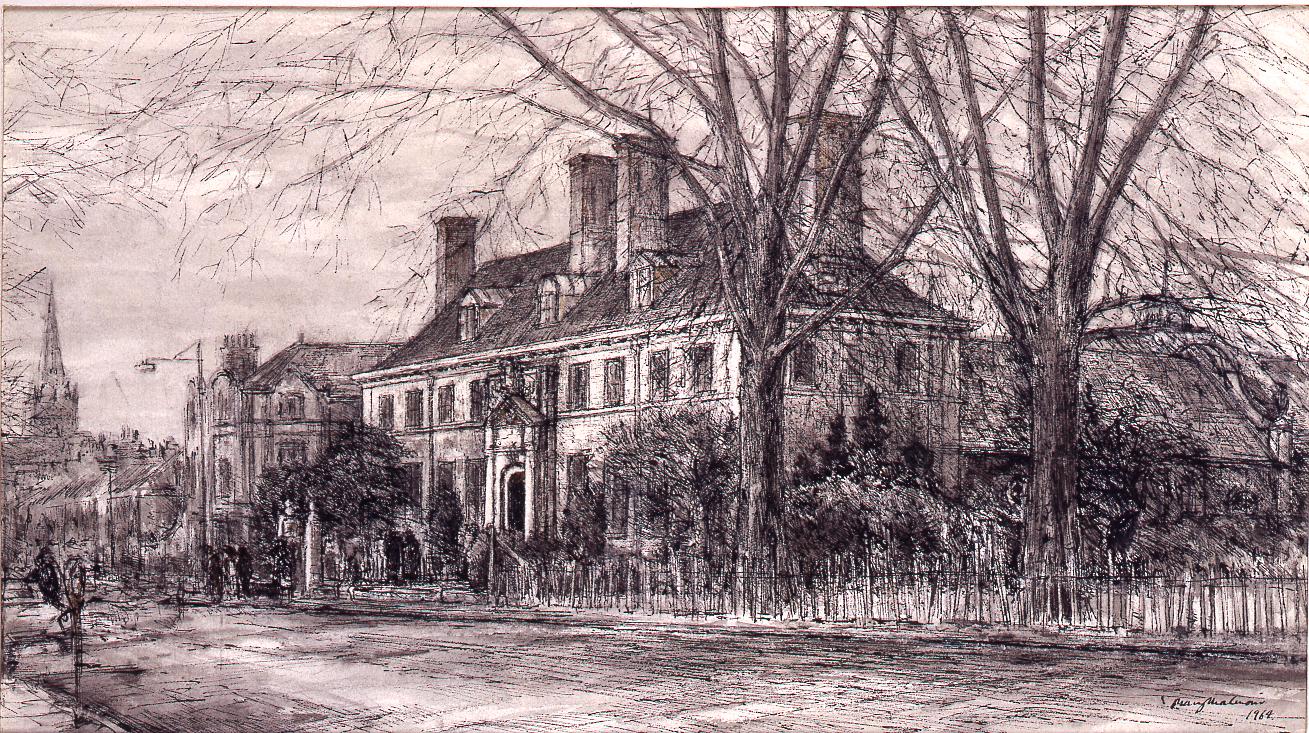
© the copyright holder. Photo credit: Royal Borough of Kingston upon Thames
Mary Malenoir
Central Library, Fairfield Road, 1964
Pen, ink and grey wash (Brill Collection)
-
Kingston’s first public library was established in temporary accommodation in 1882. The Council raised a loan to finance a permanent building for the library on the Fairfield in 1903. However, Scottish American philanthropist Andrew Carnegie offered to pay the entire amount, so the council used the loan to build Kingston Museum next door.
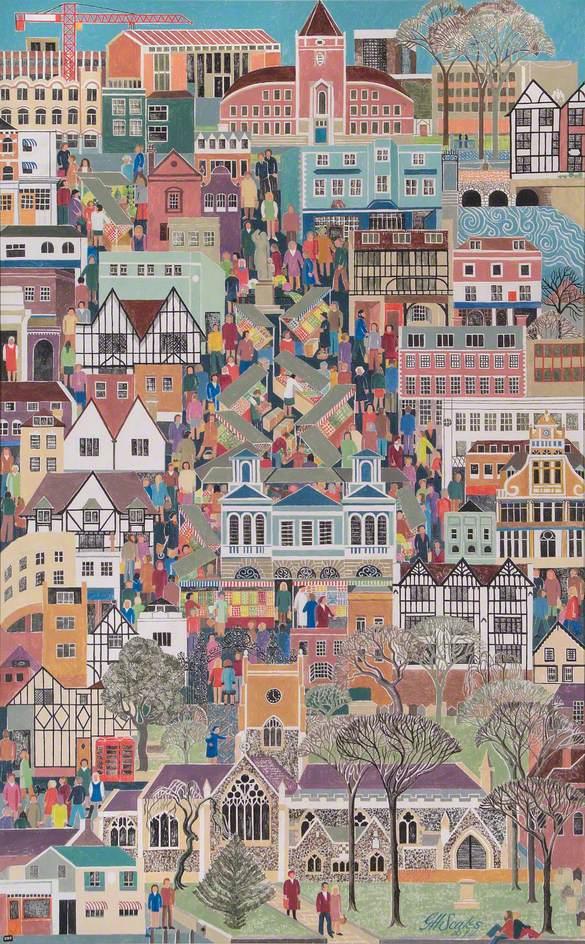
© the copyright holder. Photo credit: Royal Borough of Kingston upon Thames
G.H. Scales
Topographical View of Kingston, 1974
Acrylic
-
A decorative depiction of central Kingston, from All Saints’ Church at the bottom, through the Market House and market stalls in the middle, to Clattern Bridge and the Guildhall at the top. The citizens of Kingston throng the streets. The crane symbolises the extensive redevelopments of the 1970s.
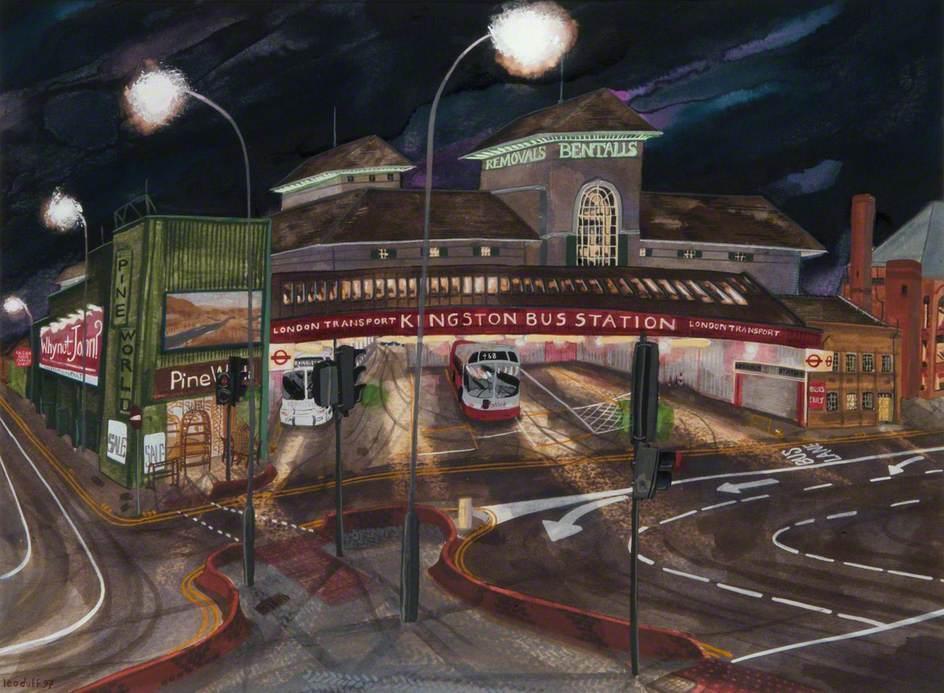
© the copyright holder. Photo credit: Royal Borough of Kingston upon Thames
Leo Duff
Kingston Bus Station by night, 1997
Acrylic on paper (Brill Collection)
-
The bus station was demolished in 2000 and replaced by the Rotunda, a cinema and leisure complex. The Friends of Kingston Museum and History Centre relaunched the Brill Collection scheme in 1997 by commissioning this painting from Leo Duff, a senior lecturer in Kingston University’s Faculty of Art, Design and Music.
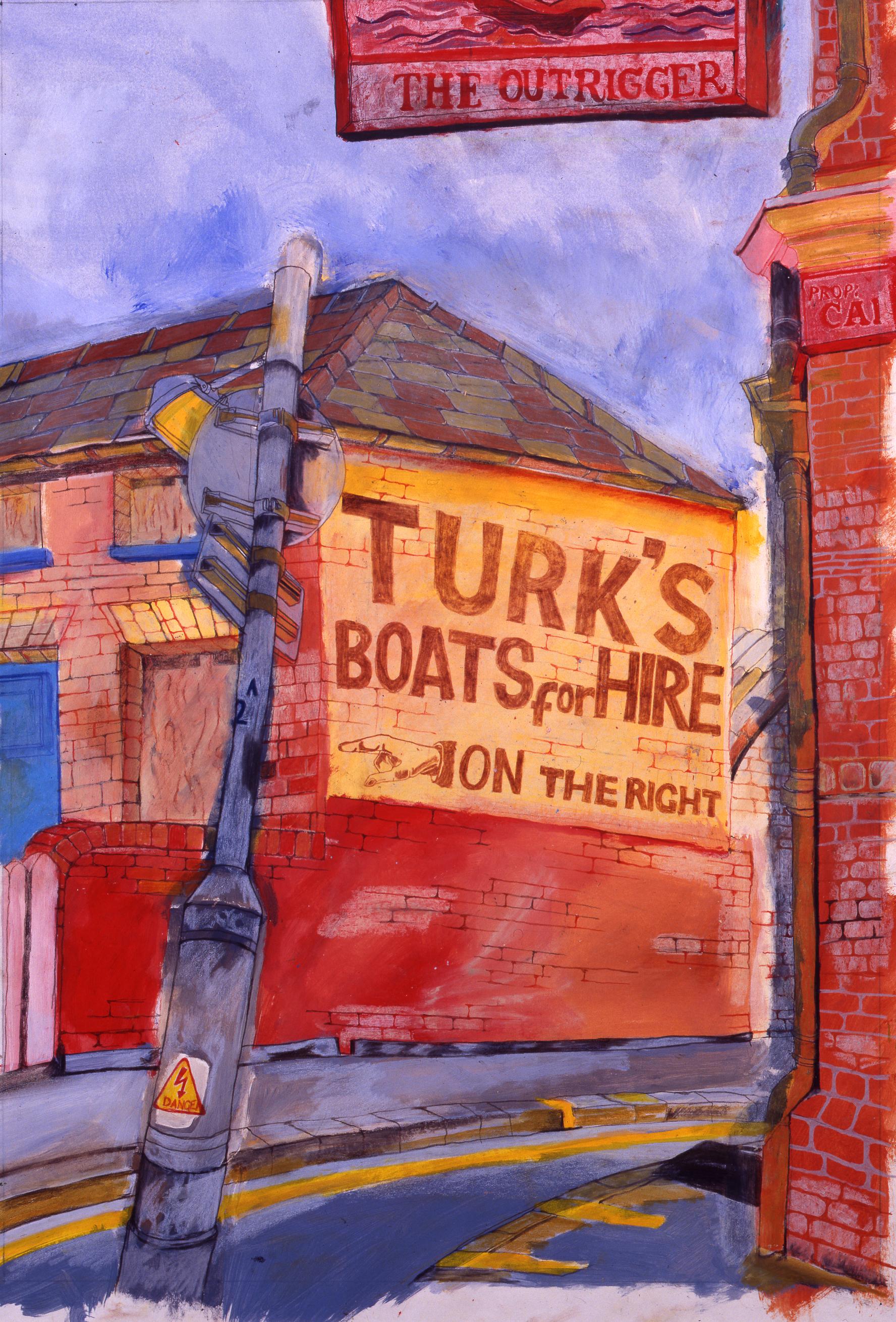
© the copyright holder. Photo credit: Royal Borough of Kingston upon Thames
Eve-Marie Roberts
Turk’s Old Homestead, Thames side, 1998
Pen, ink, watercolour and pastel (Brill Collection)
-
The Turks family built boats in Kingston for 250 years from the 18th century. Turks now have two jetties from which they offer river trips along the Thames. The Outrigger pub, whose sign is visible, served the working men of the waterfront for many years until it was demolished in 2000.
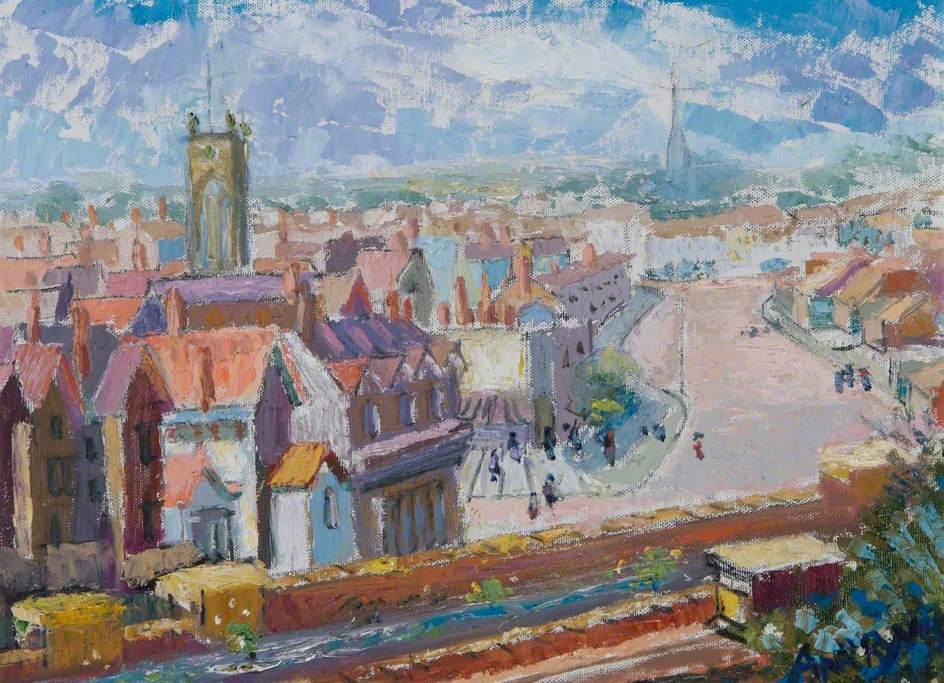
© the copyright holder. Photo credit: Royal Borough of Kingston upon Thames
Ann Ryves
Norbiton Surrey As It Was, 2004
Oil on canvas
-
The artist drew this scene from the top storey of her Norbiton school in the 1940s when she was about 19. In 2004 she created this painting from the sketch, recreating her memory of Norbiton as it appeared sixty years previously, densely inhabited, but with quiet streets and churches spires dominating the skyline.
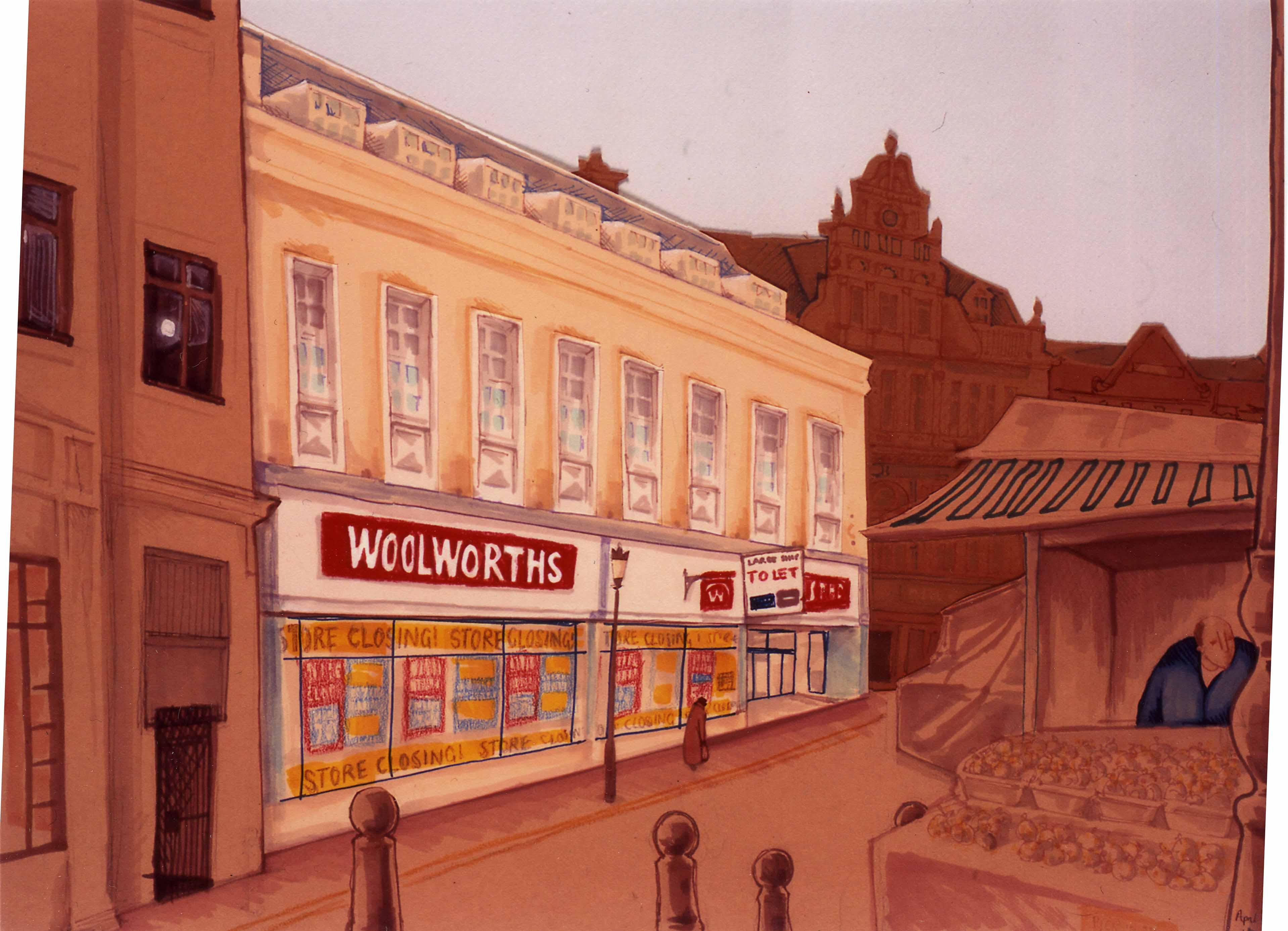
© the copyright holder. Photo credit: Royal Borough of Kingston upon Thames
Hannah Radenkova
Woolworth’s in the Market Place, 2009
Collage with ink and watercolour (Brill Collection)
-
Woolworths opened on Clarence Street in 1914. The shop moved to the site of the old Sun Hotel in the Market Place in 1931. It continued as a popular town centre chain store until the Woolworths Group went out of business following the world financial crisis. Swedish hardware store Clas Ohlson then occupied the premises, but closed in 2019, leaving the space vacant.
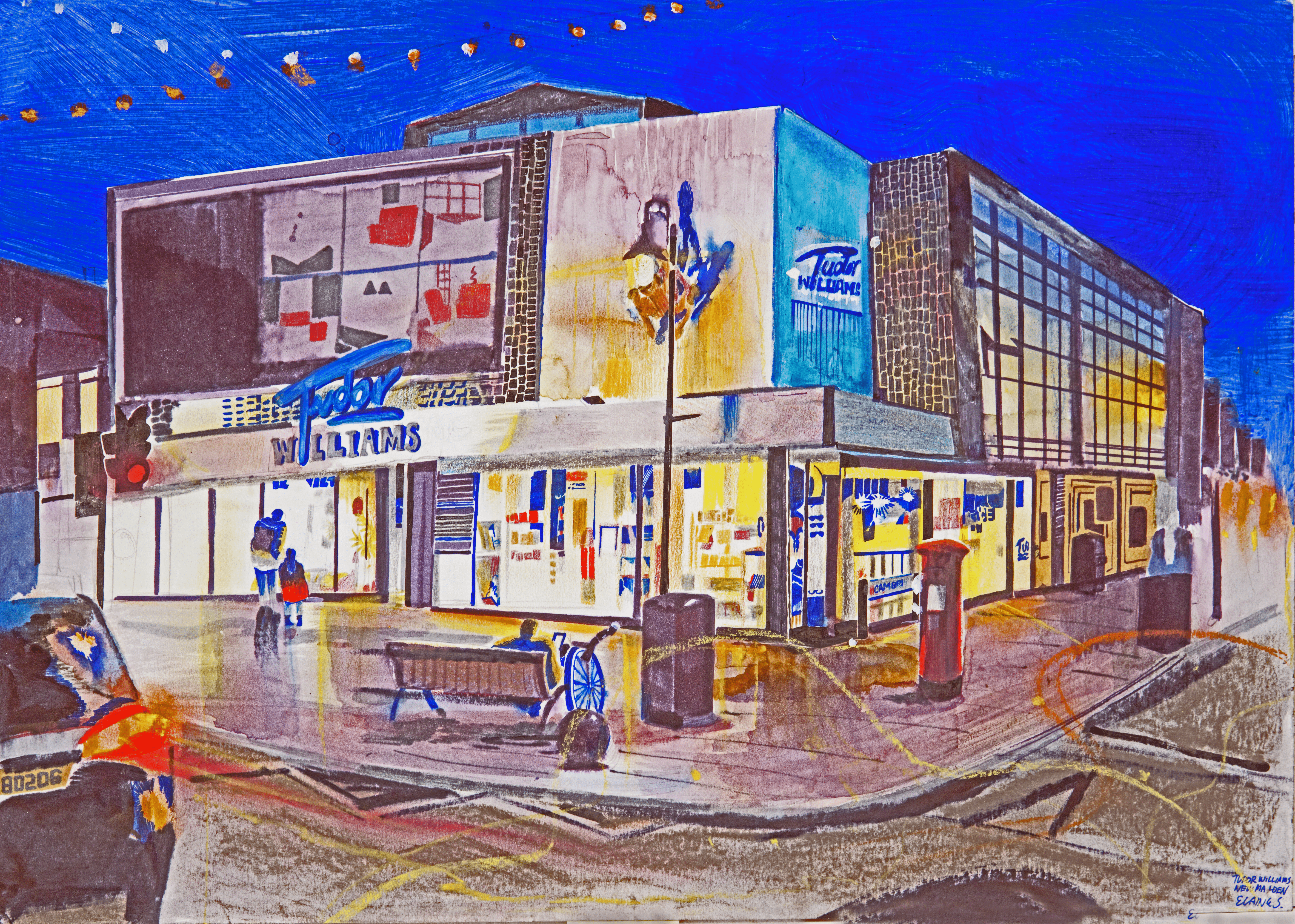
© the copyright holder. Photo credit: Royal Borough of Kingston upon Thames
Elaine Song
Tudor Williams Department Store, High Street New Malden, 2019
Acrylic, pen, pencil (Brill Collection)
-
Tudor Williams department store was part of New Malden high street for over a century. It was founded by a Mr Tudor Williams who came to New Malden from Wales in 1913 and purchased a small corner shop. The business started as a milliners and haberdashers and extended into adjacent properties as it grew in size. Following the banking crisis of 2008, the store faced competition from shops in nearby Kingston and in London, as well as a growth in online shopping. It closed its doors in June 2019.

